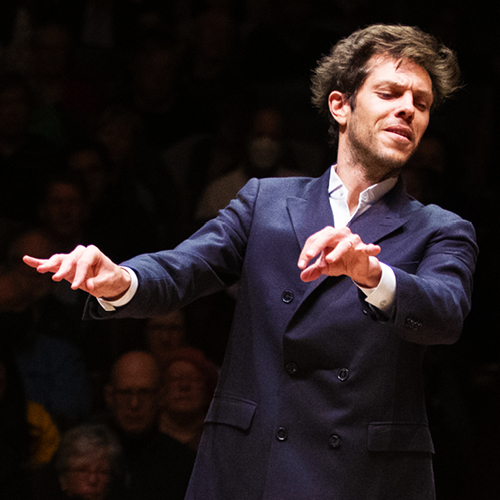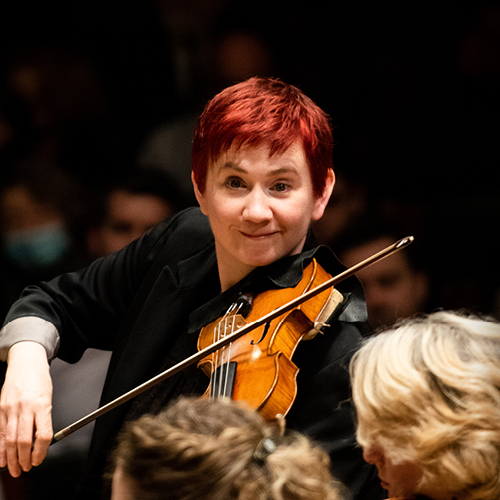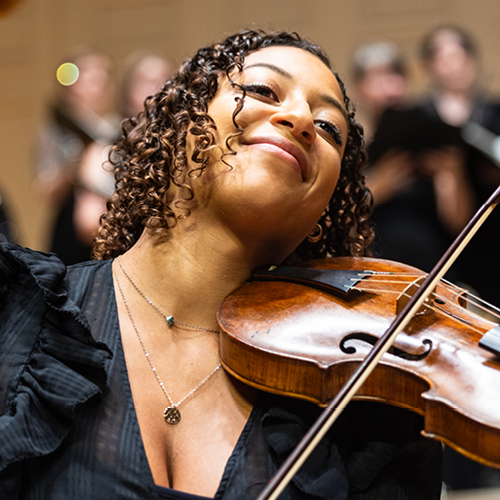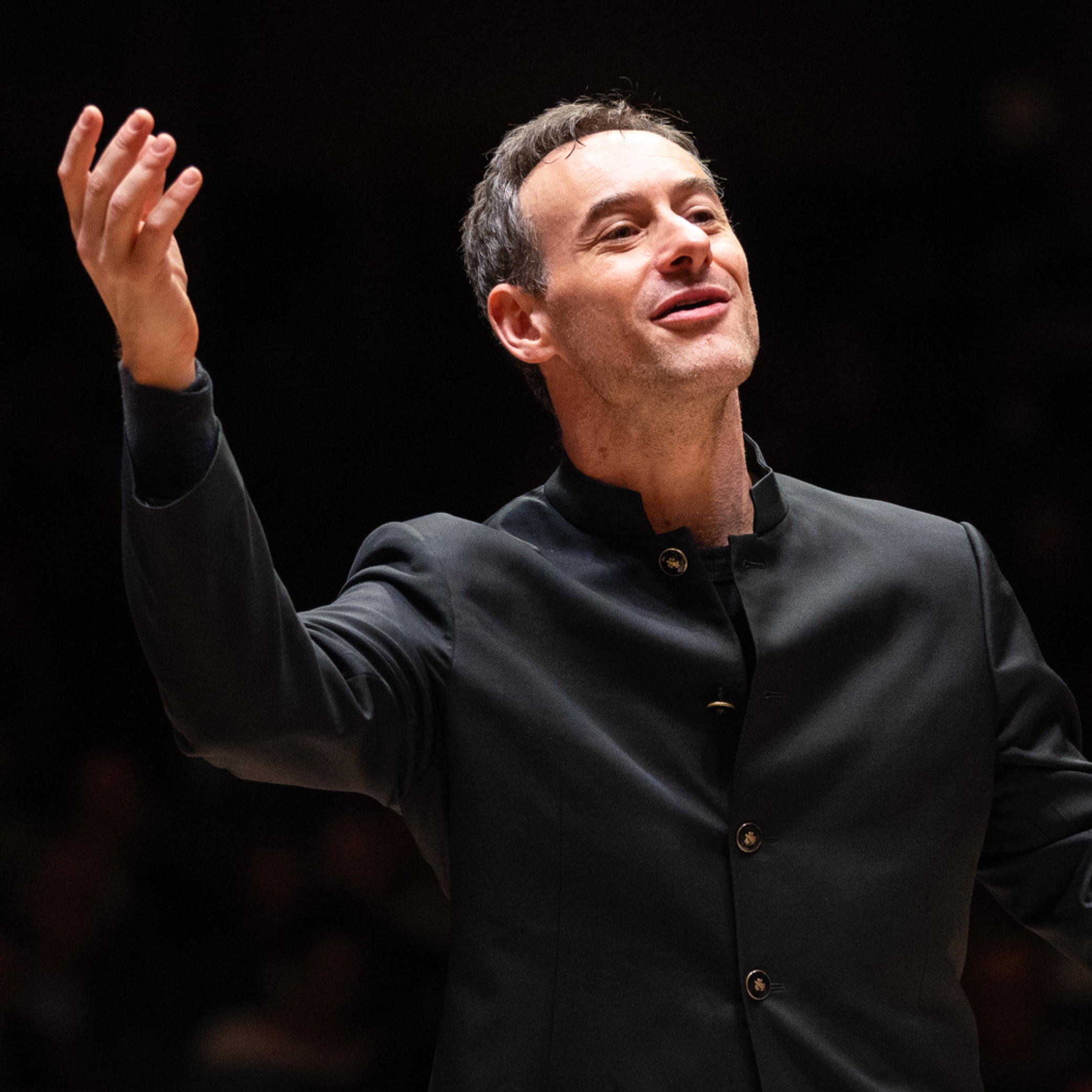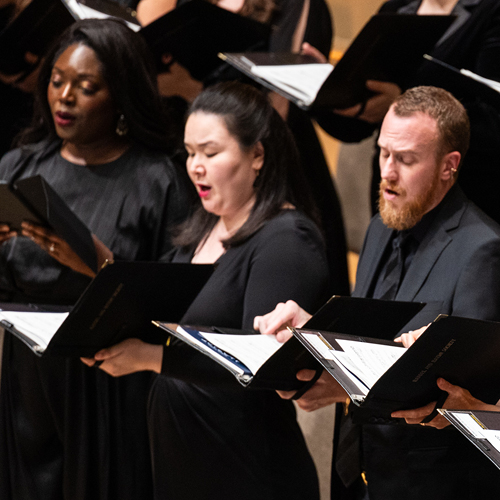
Enhanced Program Notes:
Mozart Jupiter Symphony

Portrait of Carl Philipp Emanuel Bach by Franz Conrad Löhr. Gemäldegalerie der Staatlichen Museen zu Berlin

Frederick the Great, flute, with C. P. E. Bach at the keyboard by Adolph von Menzel, 1852. Alte Nationalgalerie, Berlin

1782 portrait of Mozart by his brother-in-law Joseph Lange. Mozarts Geburtshaus, Salzburg

Detail of Ludwig van Beethoven portrait by portrait by Joseph Willibrord Mähler, 1804–05. Archiv für Kunst und Geschichte, Berlin

Facsimile of the first page of Beethoven’s Heiligenstadt Testament. Beethoven Museum, Wien Museum
Opposing forces
The interplay of contrasting musical ideas is at the heart of the music on today’s concert. Carl Philipp Emanuel Bach’s Cello Concerto in A Major, W. 172, underscores the traditional roles of a soloist and orchestra within the composer’s unique harmonic language. In his Symphony No. 41 in C Major, K. 551, Jupiter, Wolfgang Amadè Mozart juxtaposes the forceful and the gentle, building to a combination of ideas that feels logical and surprising at the same time. Ludwig van Beethoven employs two main themes to elucidate the title character’s dilemma in his Coriolan Overture, Op. 62, each representing an aspect of the story by Heinrich von Collin.
The second surviving son of Johann Sebastian and Maria Barbara Bach, Carl Philipp Emanuel developed his own compositional style, which explored new means of expression through melody, harmony, and rhythm. Emanuel’s influences were wide-ranging and included his father, Handel, Haydn (whom he, in turn, influenced), as well the author Gotthold Ephraim Lessing and philosopher Moses Mendelssohn (Felix Mendelssohn’s grandfather).
Emanuel earned his law degree before turning his full attention to music. In 1738, he was hired by Frederick, then Crown Prince of Prussia, as a keyboard player and two years later Bach was appointed as a court musician for the newly crowned king. Frederick the Great was an avid flutist and one of the only paintings of Frederick performing includes Bach at the keyboard. Bach remained with Frederick’s court for almost thirty years, leaving in 1768 to accept a position in Hamburg—a post once held by his godfather Georg Philipp Telemann and analogous to the position his father held in Leipzig.
The Cello Concerto in A Major, one of three concertos by Bach that are mainstays of the genre, was written between 1750 and 1753 and may have been performed by the Berlin court cellist Ignaz Mara. Although once thought to be a transcription from a keyboard or flute concerto, recent research now argues against that assumption.
The joyous tone of the first movement is heralded by the leaping figures in the first measures. Rising scales answer this opening and establish the give-and-take of this movement and the concerto as a whole. Even when the mood suddenly, but momentarily, shifts to something quieter and more introspective, it is understood as shading rather than a completely new direction. The entrance of the soloist adds a new musical intensity, with unrelenting virtuosic passages.
In the second movement, Largo, the subdued sound of the accompanying strings becomes the backdrop from which the solo cello emerges with a line that is as beautiful as it is unsettled. This is not a movement of rest or repose but of exploration, of following the emotion wherever it might lead. The accompanying strings sometimes join the soloist in a call-and-response pattern, but the soloist remains the driving force.
The strings present two clearly defined patterns in the final movement: the first is ebullient and extended; the second is brief, contains chromatic inflections, and is played only by the violins. The first and second violins begin this contrasting idea on the same pitch and then move in opposite directions. Bach soon abandons the motion so that this respite becomes a way to gather energy for the continuation of the phrase. The soloist initially focuses on the first idea in a jaunty interchange with the strings but takes up the second idea as the movement continues.
C.P.E. Bach’s influence on later composers included both Mozart and Beethoven. Beethoven collected Bach’s music and owned a copy of the composer’s book on playing the keyboard. Mozart also knew Bach’s works and reportedly referred to him as the “father” of the music of his day.
As a child Mozart toured the capitals and courts of Europe, often performing with his sister Anna Maria. No doubt a source of income for the family, these tours gave the young musician invaluable first-hand experience with diverse compositional styles. By the 1770s, with the mystique of the child prodigy waning, Mozart turned to composition in earnest with the hope of securing a leading musical position at a European court. He never received the court appointment he sought (Kapellmeister), but as a free-lance musician in Vienna in the 1780s, he composed (mostly on commission) taught, performed, and published.
In the late 1780s, Mozart’s income from publishing decreased substantially (about 75% between 1787 and 1788). His two sources of steady income were now the imperial court, for which he wrote mostly dance music, and the Gesellschaft der Associierten Cavaliere, a group of noblemen led by Baron Gottfried van Swieten who sponsored concerts in Vienna. Mozart was commissioned to arrange Handel oratorios as well as direct Gesellschaft concerts, beginning with their first concert which featured C.P.E. Bach’s oratorio Die Auferstehung in Himmelfahrt Jesu.
During the summer of 1788, Mozart completed three symphonies, the last of which, Symphony No. 41 in C Major, was entered in his personal catalog on August 10. Mozart had not composed a symphony since 1786 and the reason he now wrote three in quick succession is uncertain. Mozart may have intended to present them at an upcoming concert series as well as an anticipated, but unfulfilled, trip to London.
Mozart did not refer to his Symphony No. 41 in C Major as Jupiter. Who did nickname the symphony remains unconfirmed; however, within 30 years of its composition, the name Jupiter was definitively a part of this work’s legacy. According to Vincent Novello, English publisher and author of A Mozart Pilgrimage: Being the Travel Diaries of Vincent and Mary Novello in the Year 1829, Mozart’s son credited the London impresario, Johann Peter Salomon, for the nickname. In 1819, the title was printed in a program for the Edinburgh Music Festival; about 2 years later the name was again used in the program for a Philharmonic Society of London performance.
Why the symphony was nicknamed Jupiter is even less certain. Scholars have suggested that the work has Masonic references or that Mozart was quoting, consciously or unconsciously, either Handel’s oratorio Judas Maccabaeus or the hymn Lucis creator. Or perhaps the review of Muzio Clementi’s 1823 edition of the symphony, complete with descriptive title and a picture of the Roman god, summarized it best: “... such a title would well denote its majestic grandeur.”
In the first movement, Allegro vivace, Mozart places an assertive, ascending motive played forte (loudly) and in unison back-to-back with a lyrical, ascending melody plus accompaniment played piano (softly). Each of these components—and the rests which are interspersed among them—will be manipulated throughout this movement and the symphony as a whole.
The second movement, Andante cantabile (slow and songlike), features muted strings.
The opening echoes the first movement with short motives separated by rests. Mozart continues relating the movements with the Menuetto, which floats in an elegant dance until dramatic interruptions displace the natural flow.
The last movement returns to the energy and power of the first, then just as this movement supposedly comes to a close, Mozart refocuses our attention by incorporating five different themes in an astounding contrapuntal section, a fugue. All of this adds up to a symphony of tremendous power and beauty.
By the time Beethoven composed the Coriolan Overture, he had been living in Vienna for almost eight years. Regarded as a piano virtuoso when he first arrived in the city, in the intervening years Beethoven solidified his reputation as a composer with numerous compositions including string quartets, symphonies, and concertos. He also surmounted a personal crisis, documented in what today is known as the Heiligenstadt Testament. In this deeply moving letter, Beethoven recounted his despair over his hearing loss, saying, “I would have put an end to my life — only Art stopped me, ah it seemed impossible to leave the world until I had produced all that I felt called upon me to produce, and so I endured this wretched existence.”
Beethoven most likely wrote his Coriolan Overture for a revival of the play by Heinrich von Collin. Based on the Shakespeare play, Collin tells the story of Coriolan, an exiled Roman hero, who joins Rome’s enemies and plans to attack the city. Coriolan’s mother and wife, however, convince him to break off the attack. In Collin’s drama, the hero falls on his sword, caught between allegiances. Beethoven’s plans for this music and why he did not write other music to accompany the play are unknown, but the overture was often performed after its premiere in March 1807.
Beethoven’s Coriolan is associated with both the external and internal struggles in this story of conflicting loyalties. The bold opening chords and first theme—in minor—of short, repeated motives in the strings convey the feeling of a battle, whether with an outside force or within oneself.
This tension fades into a tender idea, now in major and introduced by the strings before being taken up by the winds. However, even with this new theme, often associated with Coriolan’s family, there is underlying tension. Beethoven emphasizes this about half-way through the overture when he scores the strings playing the tender theme in major and then has the winds render the same idea in minor.
Resolution, such as it is, only comes after a return of the opening chords.
A variety of musical exchanges abound in these three works, from the intimate conversation between the soloist and strings in the second movement of Bach’s concerto to the use of winds as defining elements in both Beethoven’s overture and Mozart’s symphony. Considering that Beethoven knew Mozart’s music and both knew C.P.E. Bach’s works, another kind of interchange emerges: composers inspiring and challenging one another.
Teresa M. Neff | 2019

